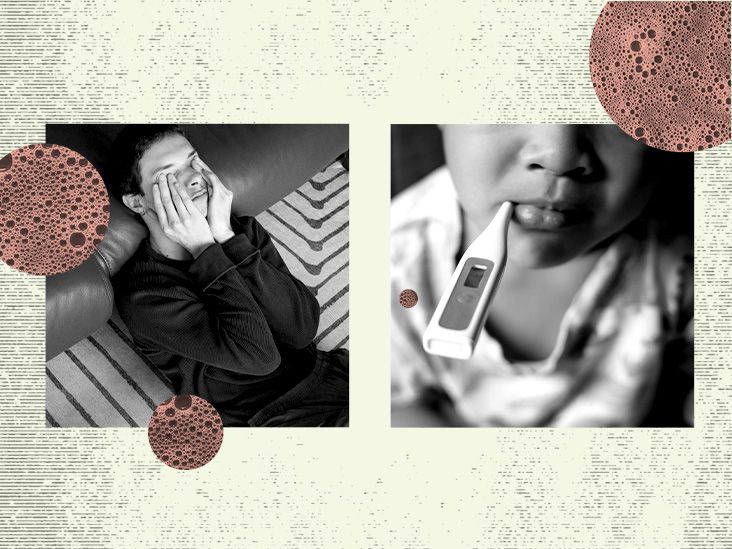Understanding the Mind-Body Connection
The concept of the mind-body connection explores the complex interplay between our thoughts, emotions and physical health. This relationship is bidirectional - the mind influences the body, and the body sends signals back to the mind. When we understand how to interpret the messages of the body, we gain powerful insight into improving our overall wellbeing.
The Mind Impacts the Body
Our mental and emotional states directly impact our physical functioning. Stress takes a toll on the body by raising blood pressure, heart rate, and muscle tension. Negative emotions like anger, anxiety and sadness can also trigger real physical responses.
On the flip side, positive emotions enhance the body's natural healing abilities. Joy, gratitude and laughter release feel-good chemicals that lower stress. A peaceful mind helps the body relax and rejuvenate.
The Body Sends Cues to the Mind
Physical sensations provide feedback that shapes our thoughts and feelings. For example, exhaustion or sluggishness communicates that we need more rest. Stomach discomfort may indicate anxiety brewing beneath the surface.
When we ignore these cues from the body, it leads to more pronounced signals demanding our attention. Minor symptoms can worsen and cause real dysfunction when left unaddressed.
Decoding Stress Signals from the Body
In our fast-paced modern lives, chronic stress is extremely common. The mind perceives mental pressures, and the body translates this into physical symptoms. Learning to listen to these stress signals enables us to mitigate damage and restore balance.
Headaches
Tension headaches often arise when we internalize stress. Tightening of the shoulder and neck muscles radiates upward, compressing nerves that converge in the head. Taking time to relax the body helps relieve constricting tension before it turns into debilitating migraines.
Fatigue
Stress hormones prevent the body from fully relaxing into restorative sleep. Insufficient sleep then lowers our capacity to cope with stress, creating a vicious cycle. Resetting your sleep schedule and bedtime routine supports the bodys need for recharging rest.
Digestive Upset
When we feel pressured and anxious, digestion shuts down to divert energy elsewhere. Stress-induced stomachaches, nausea and constipation signal a need to address the root cause. Soothing the nervous system returns the digestive system to smooth functioning.
Aches and Pains
Chronic stress causes the muscles to remain tense, often without conscious awareness. This tension accumulates over time into strained, cramped, stiff and aching tissues. Releasing fixed muscle holding patterns is key to stopping pain.
Interpreting Emotional Messages of the Body
Beyond physical stress signals, the body also reacts to emotional issues brewing beneath the surface. Tuning in to these subtle clues allows us to proactively address emotional distress before it escalates or transforms into illness.
Gut Feelings
That "pit in your stomach" often relates to suppressed anxiety or fear. Processing difficult emotions openly rather than bottling them up helps digest these gut feelings. regular reflection or talk therapy brings subconscious concerns into conscious awareness.
Breath Changes
When worried or upset, people unconsciously hold their breath or breathe only shallowly into the chest. Slow, deep, diaphragmatic breathing not only soothes the body but also improves emotional regulation. Regulating your breathing restores inner calm.
Skin Reactions
Skin issues like acne, eczema or itching often signal emotional turmoil. Feelings we judge as unacceptable may manifest physically on the skins surface. Self-acceptance and compassion helps overcome inner criticism driving skin reactions.
Low Energy
Emotional numbness and depression drain energy by disconnecting us from our natural vitality. Re-engaging in meaningful activities, relationships, and self-care rituals reinforces energetic resilience from within.
Physical Signs of Inner Peace
Our emotional states - both positive and negative - get communicated through physical channels. When we cultivate inner peace, our bodies reflect this sense of deep contentment. We exude an aura of ease and harmony everywhere we go.
Relaxed Facial Expressions
Serene, happy faces come from peace of mind within. When we feel balanced, our genuine smiles and cheerful eyes broadcast a profound sense of wellbeing to others. This inner glow shines through naturally.
Open, Upright Posture
Those at peace inhabit their bodies with an elevated posture. Spine, neck and head aligned, shoulders back, heart open. They move through the world grounded and graceful. Their composure conveys confidence stemming from inner tranquility.
Mindful Movement
Every action flows with present moment awareness. There is no rush, just complete focus immersed in each step, breath and activity. Their embodiment of mindful presence grounds them firmly in the here and now.
Deep Belly Laughter
Lighthearted laughter that resonates from the core communicates a playful spirit at peace with itself. Their vibrant laughter spreads joy and dissolves distress effortlessly. A full-body laugh resets whole systems, releasing layers of stored tension.
Integrating the Mind-Body Connection
Living in harmony with our embodied spirit requires establishing a fluid dialogue between mind and body. We must listen without judgement and translate their messages accurately. Integrating these lessons cultivates deep wisdom.
Body Awareness
Tune into physical sensations, both comfortable and uncomfortable. Notice areas of constriction or ease. Release unnecessary holding and tension. Scan for emotions linked to these places. Accept feedback from the body non-critically.
Emotional Exploration
Develop emotional vocabulary to identify suppressed feelings. Connect feelings to physical manifestations and life events triggering them. Express emotions in healthy ways through journaling, talk therapy and art. Don't reject parts of yourself.
Mindset Reframing
Monitor self-talk and belief systems influencing your relationship to your body. Challenge distorted thought patterns like self-judgement. Cultivate self-love, body acceptance, and thoughts that uplift your sense of self-worth.
Stress Relief Rituals
Make destressing a daily priority, not a luxury. Practice relaxation techniques like breathwork, meditation, yoga, massage and forest bathing. Carve out time for restorative self-care. Nourish your mind-body connection.
When to Seek Professional Support
Learning to integrate mind-body signals can improve many aspects of wellness. But chronic, debilitating or life-threatening symptoms require medical expertise. Seek help for:
- Intractable headaches, digestive issues, pain or fatigue
- Panic attacks, flashbacks, suicidal thoughts or self-harm
- Full loss of appetite, extreme weight changes
- Inability to care for yourself or your living space
- Worsening skin conditions or sudden swelling/inflammation
Mind-body therapies like psychotherapy, breathwork, massage and energetic healing can powerfully complement medical treatments as well.
The Path to Mind-Body Harmony
Living in tune with our mind-body wisdom ushers in a state of harmony, tranquility and vibrant health. The first step is cultivating presence through our physical form. Then comes opening to the messages of the body. Finally, integrating those lessons transforms our understanding of self and purpose. This process awakens our highest potential for wellbeing of body, mind and spirit.
FAQs
How does the mind impact the body?
Mental and emotional states like stress, anger, and sadness trigger real physical responses such as muscle tension, headaches, digestive issues, and fatigue.
How does the body send signals to the mind?
Physical sensations like aches, gut feelings, breathing changes, and skin reactions provide cues about underlying thoughts and emotions needing to be addressed.
What are signs of a peaceful mind-body connection?
Indicators of mind-body harmony include relaxed facial expressions, upright posture, mindful movement, deep belly laughter, and an overall aura of ease.
When should you seek professional support for mind-body issues?
Seek medical help for chronic, worsening, or life-threatening symptoms. Add mind-body therapies like therapy, breathwork, and massage to complement treatment.
Disclaimer: This article is for informational purposes only and does not constitute medical advice. Always consult with a healthcare professional before starting any new treatment regimen.
Related Coverage
Nasal mucus contains antibodies, moisturizes tissues, and traps pathogens - learn more about this slimy respiratory defense system with insights from mucus photos....
Experiencing hearing loss after a cold? Understand the causes, duration, and management strategies. Get insights on ear congestion, fluid buildup, and when to seek medical attention....
Colds often intensify overnight due to nasal congestion, coughing, dehydration, and immune dips when sleeping. Learn techniques to rest better and know when a cold turns severe....
Learn whether you can safely mix ibuprofen and NyQuil for cold relief. Discover which works better for nighttime symptoms, body aches, fevers and more....
Looking to quiet an irritating cough that's keeping you up at night? Try these soothing home remedies like humidifiers, throat lozenges, steam showers, and more to finally get some sleep....
Ginger cuts candy strikes the perfect balance of ginger heat and sugar sweetness for a uniquely warming, aromatic taste loved by many today as nostalgic childhood candies....
Learn if you can safely take Nyquil alongside Advil Cold & Sinus to treat cold and flu symptoms or if dangerous side effects can occur mixing the two OTCs....
Discover how using Young Living essential oils like eucalyptus, peppermint and lavender aromatically and topically can help provide natural relief for coughs....
Tamiflu side effects include nausea, dizziness, headache, and rare reactions. Get tips to ease symptoms and when to call doctor....
Flu-like symptoms can arise from many causes. Learn triggers, how to differentiate the flu, and simple steps to feel better fast....









